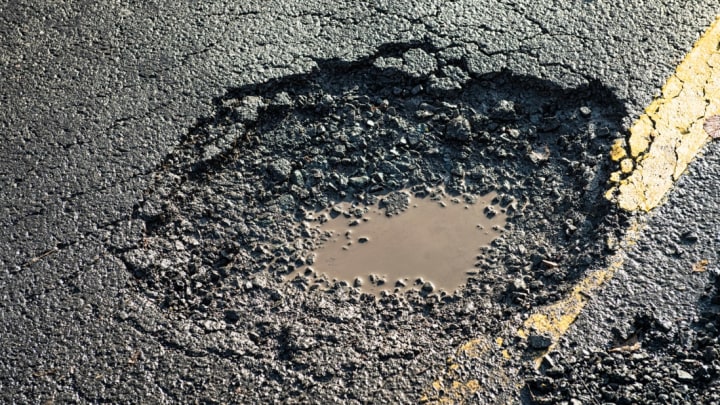Nothing interrupts a pleasant drive more than the sudden klunk of passing over a pothole. Your beverage spills. You begin to get anxious about tire damage. You wonder why city officials haven’t fixed it yet.
But how do potholes form in the first place? Lay the blame on science.
When water seeps into the rock, gravel, and soil underneath asphalt and then freezes, it expands, acting a little bit like a jack that applies pressure against the pavement. With the asphalt weakened and cracking, it becomes easier and easier for water to penetrate the surface, leading to repeated freeze-thaw cycles and more structural damage. Melting ice leaves gaps and voids.
With all this happening, the burden of traffic over the pavement doesn’t stop. It drives the asphalt into the gaps created by the melted ice. Over a period of time, the entire process results in a hole that’s destined to make you spill your coffee.
Because of these freeze-thaw cycles, potholes are more common in the late winter and spring than during other times of the year.
And yes, potholes can cause damage to car tires, puncturing them or bending the rims. You can avoid mishaps by keeping a safe following distance from the car in front of you—in the event it brakes or swerves to avoid a pothole—and avoid swerving yourself if you see one. (Driving over a pothole at an angle might be worse.) Instead, try braking until you clear the gap.
The word pothole, incidentally, comes from pottery makers in England in the 15th and 16th centuries, who would excavate the ruts made by wagon and coach wheels to retrieve clay [PDF]. The larger hole would then be dubbed a pothole by aggrieved travelers, which we use—often with an expletive—to this very day.
Have you got a Big Question you'd like us to answer? If so, let us know by emailing us at bigquestions@mentalfloss.com.
